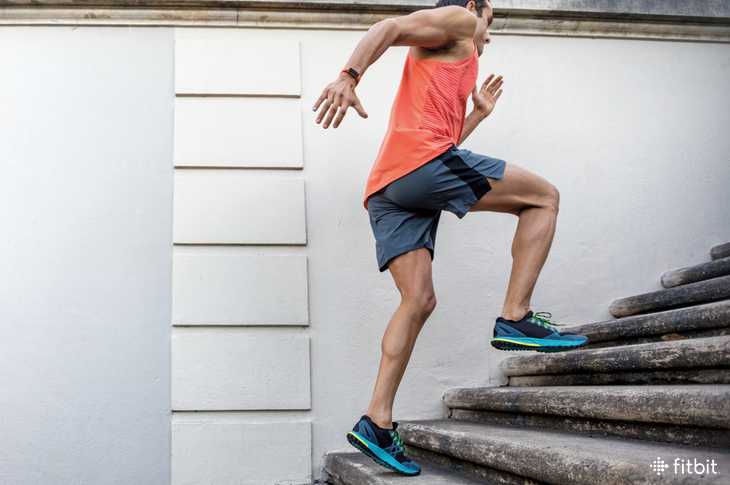
When it comes to cardio, high intensity interval training (HIIT) is a common go-to technique. It’s an effective way to get your heart pumping in minimal time. Just 30 minutes or less of all-out effort, performed in short 20 to 30 second increments and followed by recovery periods, allows you to reap similar metabolic and performance-based benefits as longer periods spent trodding it out on the treadmill. But going all-out doesn’t mean pumping your arms and legs as quickly as possible or exclusively prioritizing intensity. Before you start sweating, run through this checklist to make the most of each interval.
1. Are You Out Of Breath?
When you’re doing HIIT, you shouldn’t be able to hold a conversation. In fact, the task of anything other than breathing—and trying to supply enough oxygen to your muscles to make it through the end of that 20 to 30 second haul—should seem impossible. “For a beginner, the recommended intensity is 100 percent effort, but that’s unrealistic for a lot of people,” says Laura Miranda, DPT, MSPT, CSCS, a New York City-based fitness trainer. A quick way to measure: Make sure you’ve earned your break. “Your legs and lungs should be burning, and if someone offered to pay you $100,000 to go for 10 more seconds, you wouldn’t do it,” says Miranda.
When considering duration, 20 minutes is effective for a beginner, and 1:2 ratio—where you’re “on” for 20 seconds and then off until the top of the minute—is a good place to start. Just be sure you take full advantage of your breaks so that your energy stores aren’t burned out before the next interval begins.
2. Is Your Heart Rate Increasing?
When you’re putting your best foot forward, your perceived rate of exertion should be an 8 or 9 out of 10 and your heart should be pumping harder. Miranda recommends aiming for your heart rate to be 80 to 90 percent of your max heart rate, which translates to hard, sustainable effort. If you track your workouts with a Fitbit Alta HR, Fitbit Charge 2, Fitbit Blaze, Fitbit Surge, or Fitbit Ionic, you can view how much time you spend in each of the heart rate zones in the Fitbit App to make sure you’re exercising at the right intensity.
3. Are You Feeling The Burn?
The purpose of HIIT is to elicit an anaerobic response. “Anaerobic is literally by definition a lack of oxygen,” says Miranda. “You only have those energy stores for up to a minute; shorter if you’re a beginner.” Unlike a leisurely fun run, the goal here is to push yourself. With every interval, count the reps (for bodyweight work) or distance (for cardio-based sprints) you achieve. Then, try to beat that number with each successive round. After your training session, you’ll likely notice fatigue and post-exercise soreness. If you’re new to it, incorporate HIIT once a week. Later on, you can bump that number up to 2 to 3 non-consecutive days.
4. Are You Keeping It Short And Simple?
Miranda. Balancing on one leg while you squat down, pick up a puppy, clap your hands, and juggle will get you, well, nowhere. “Not only will it confuse someone new, but if the movement has too many components you won’t be able to reach your anaerobic zone in the time allotted,” says Miranda. Too many steps can also cause you to rush and lead to the breakdown of technique. When it comes to HIIT, your program should be one thing: simple. “Keep the movement pattern simple enough that your brain doesn’t break down,” says Miranda.
Sometimes basic movement patterns work best, says Miranda. “Sprinting up a hill or set of stairs, or focusing on body weight squats or lunges works well because it allows you to be perceptive of any breakdown in form,” she says. If you find yourself maxing out on a movement 10 to 15 seconds in, modify. “Instead of pushing too hard and cranking out only 2 more jump squats, do a regressed version like regular squats,” says Miranda. “You’re still moving, activating the same muscle groups, and getting the same intensity, but you’re not sacrificing your joints.”.
5. Are You Adding Restorative Work To Your Routine?
Sitting at work for 8 to10 hours and then expecting your muscles to be “on” when you step into the gym is like pulling a cold rubberband from the freezer and expecting it to stretch effectively. “Your muscles, neurological system, and mind are truly not ready for max effort, which is why dynamic stretching is so important,” says Miranda. Active stretching can help to alleviate tight muscles, that could otherwise cause imbalances and set you up for injury down the road. Static movements, like bending over to touch your toes, before a workout is not enough to prepare your body to train. Three of Miranda’s recommendations include the Downward Dog to Pigeon Pose yoga flow, a piriformis stretch that hits all of your hip rotators, and a kneeling quadriceps stretch with an elevated foot to activate your hip flexors and quads while reinforcing a good core and neutral pelvic position.
Post-workout, when your muscle fibers have been under max contraction, is when static stretching and foam rolling are essential. slowly introduce elongation. Here’s where post-workout. ““HIIT is max effort for your body and can be aggressive on your joints, tendons, and ligaments,” says Miranda. “Slowly introducing elongation after a HIIT session with static stretches, and breaking up fascia with foam rolling, can help to limit potential build-up of muscle tightness which can cause imbalances that could lead to injury in your ankles, knees, hips, and lower back.”
The post 5 Ways To Know You’re Going Hard Enough With HIIT appeared first on Fitbit Blog.
Source: Fitbit Blog
—